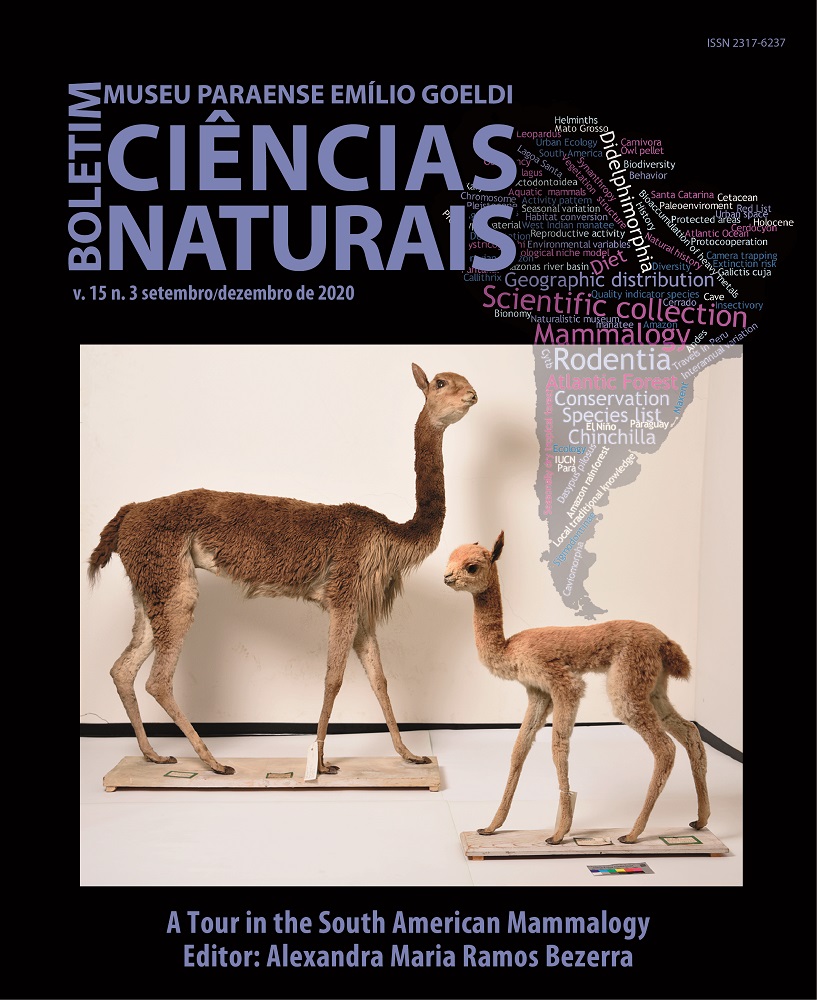Muroid rodents (Mammalia, Cricetidae and Muridae) from Toca dos Ossos, Ourolândia, Caatinga of the State of Bahia, Brazil
DOI:
https://doi.org/10.46357/bcnaturais.v15i3.215Keywords:
Caatinga. Cave. Owl pellet. Sigmodontinae.Abstract
Muroid rodents include the two most diversified mammalian families of the world, Cricetidae and Muridae. Despite this, muroids are still poorly addressed in many regions, such as the Caatinga biome. This study reports the muroid rodents from the ‘Toca dos Ossos’, municipality of Ourolândia, central-northern Bahia state. The ‘Toca dos Ossos’ is a natural cavity excavated in the limestone massif of the Caatinga Formation, standing out as an important paleontological site. The studied material consists of cranial and mandibular fragments retrieved in two cave areas. One of them represent Tyto furcata pellets collected at a sinkhole, and the other is from material collected in the surface sediment of cave halls and internal conduits. The following species were recorded: Necromys lasiurus, the most frequent in the samples, Cerradomys sp., Holochilus sciureus, Oligoryzomys sp., Calomys sp., Wiedomys pyrrhorhinos, and Rattus rattus, the latter exclusively found in the owl pellets samples. Even though there are differences in the frequencies of the taxa, the communities from both of the cave areas possess great taxonomic similarity and include species currently found in the Caatinga, including the exotic species R. rattus, suggesting a recent age for the material, subsequent to the expansion of this biome, which happened 4,000 years ago.
Downloads
Published
Issue
Section
License
Publication means fully assigning and transferring all copyrights of the manuscript to the journal. The Liability Statement and
Assignment of Copyrights will be enclosed with the notice of acceptance. All the authors must sign the document and return it to the journal.






